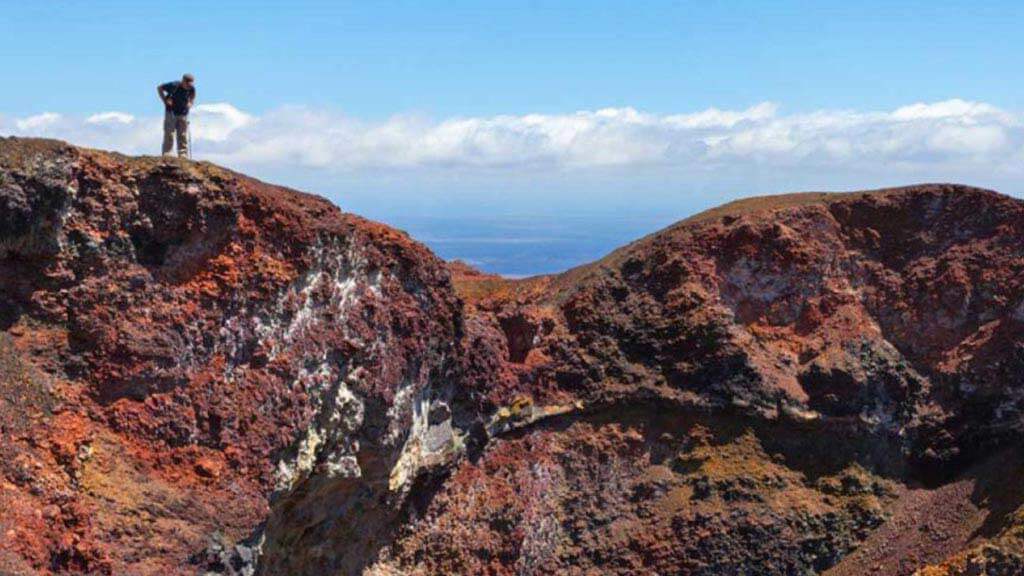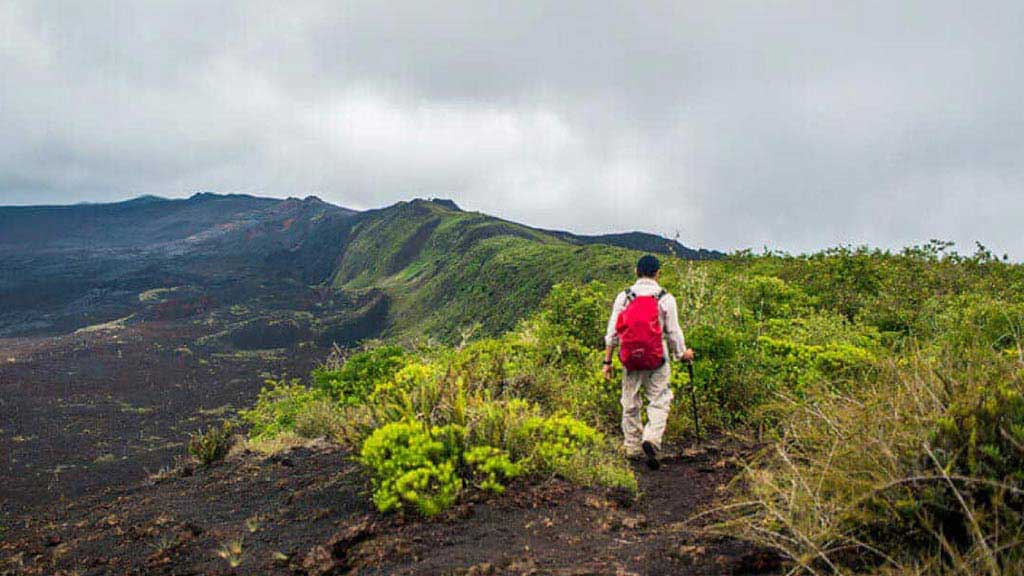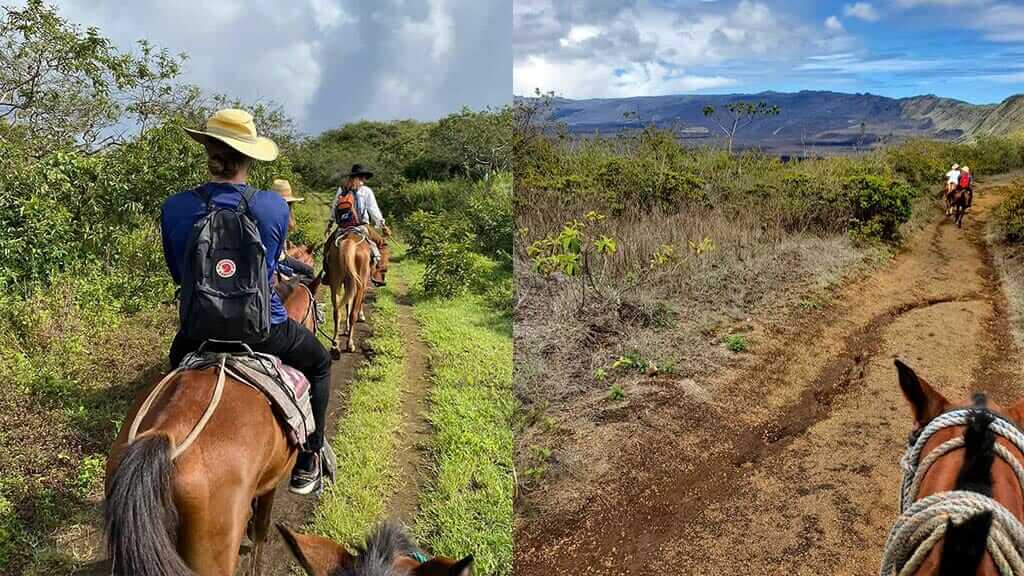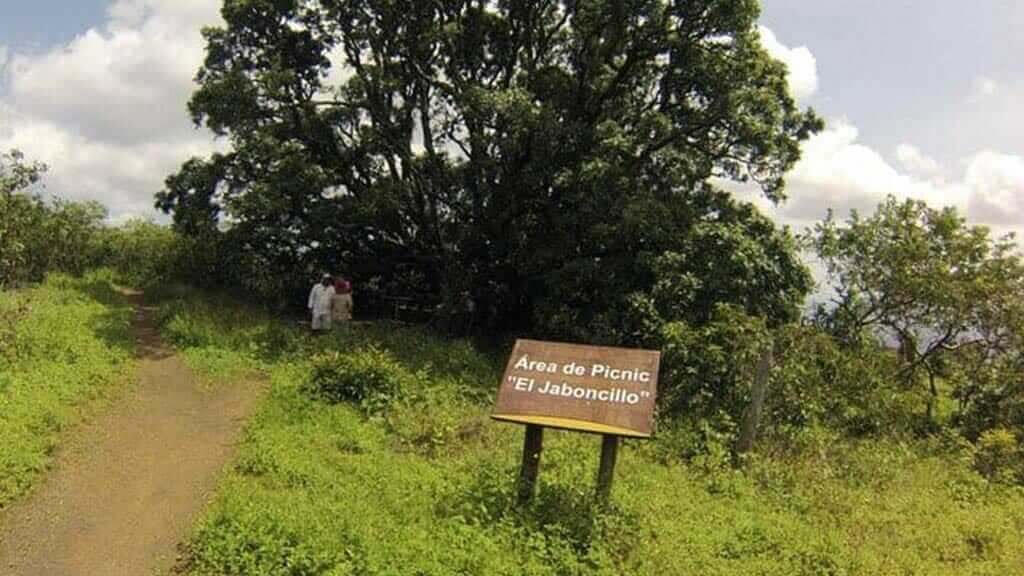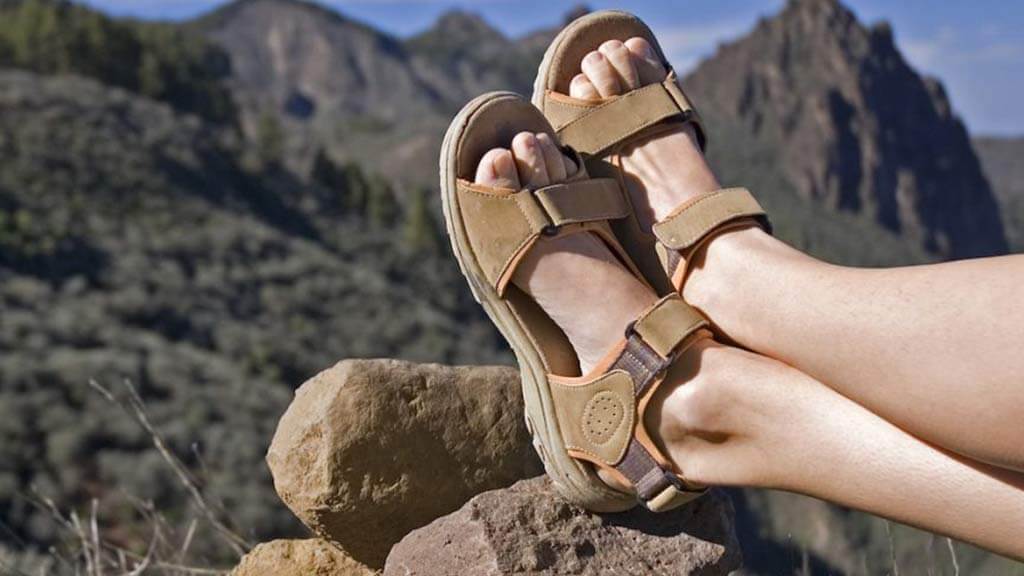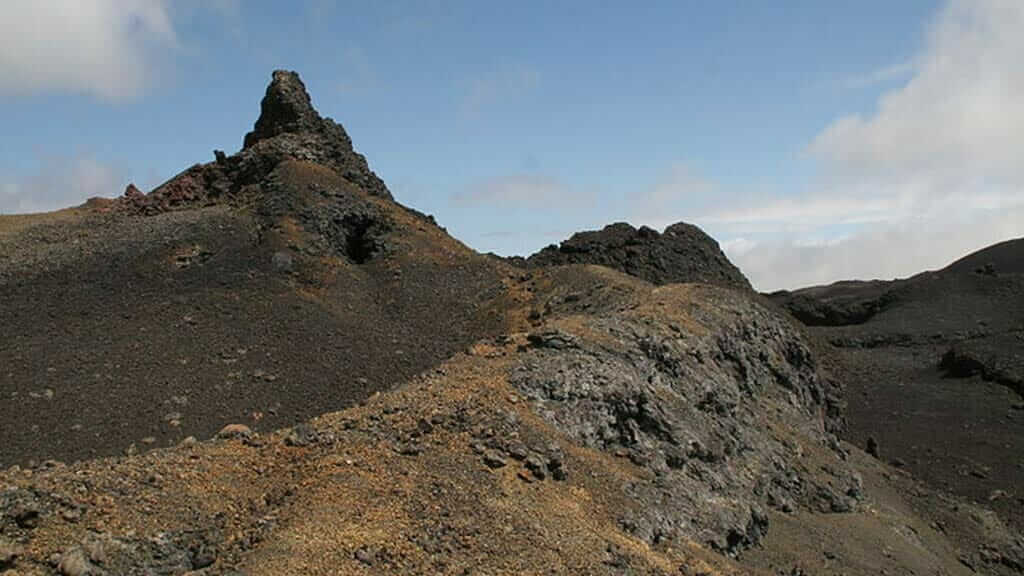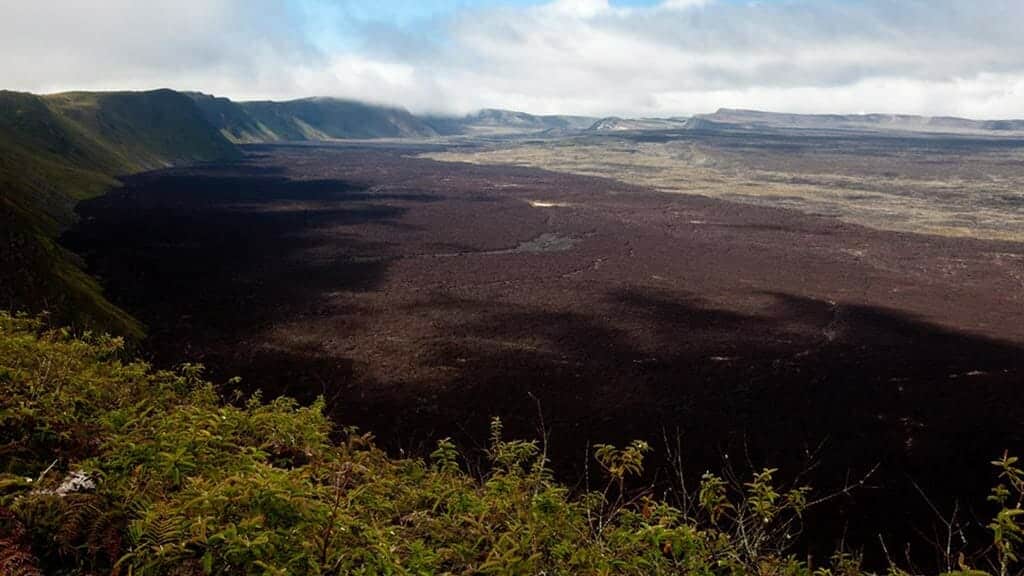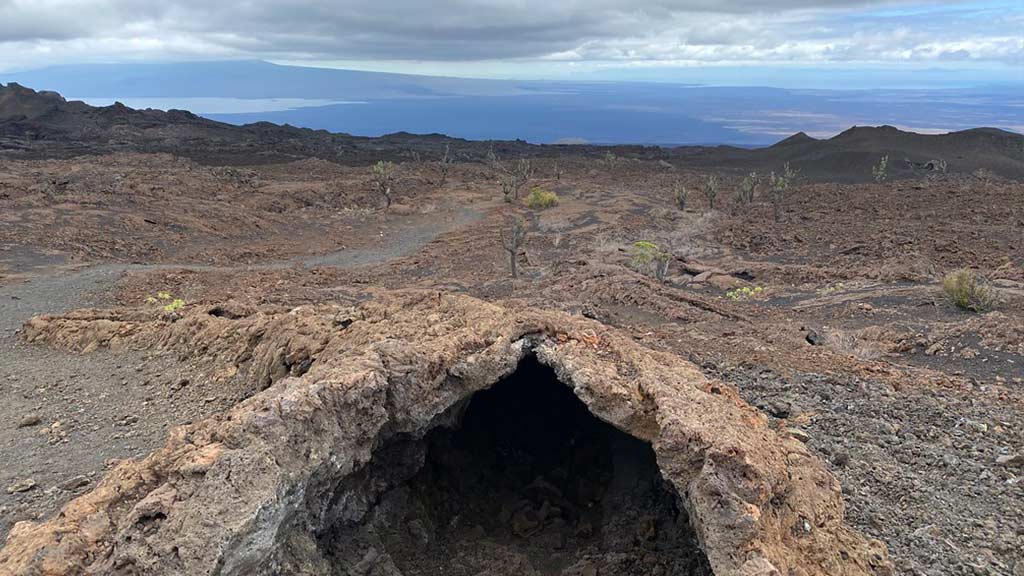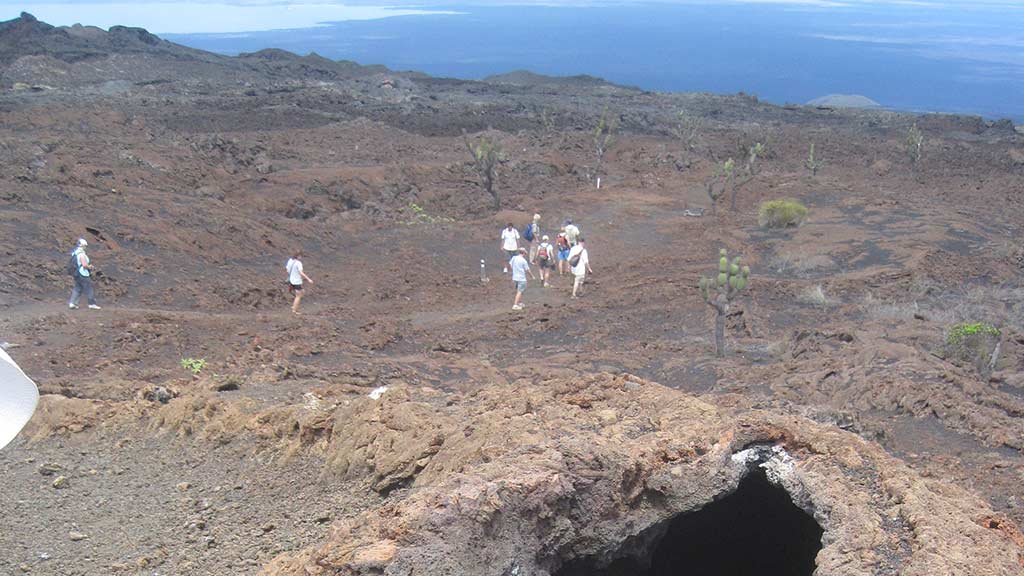Sierra Negra Volcano (Volcan Sierra Negra)
Galapagos is one of the most active volcanic regions on the planet. So, no trip would be complete without some volcano adventure thrown in. Look no further than the spectacular Sierra Negra Volcano, on Isabela island. Not only does Sierra Negra Volcano boast one of the world’s largest craters, but the Sierra Negra hike is also one of the most popular on the Galapagos. This is definitely one volcano that should be on your Galapagos wish list!
So, let’s check out how to make it happen. Keep Reading for everything you need to know about Sierra Negra Volcano, and most importantly, how to plan the perfect visit.
SECURE YOUR GALAPAGOS TRAVEL
Get a FREE personalised quote todayWhere is Sierra Negra Volcano in Galapagos?
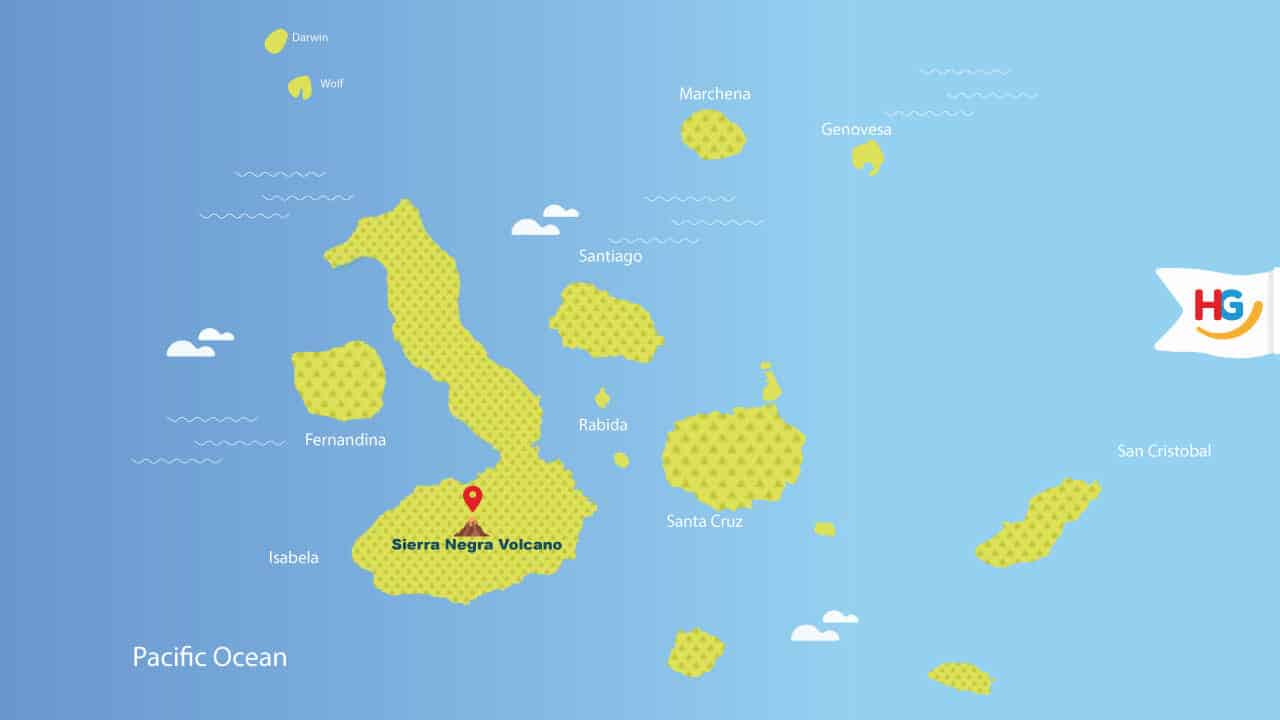
Sierra Negra volcano is located on Isabela island, Galapagos. Isabela is the large, sea-horse-shaped mass to the west of the archipelago.
Sierra Negra's wide, imposing crater dominates the skyline of southern Isabela. Sierra Negra is easily accessible, just 13 miles (21 kilometers) from the port town of Puerto Villamil, where most tourists overnight when visiting Isabela.
How to Visit Sierra Negra Galapagos?
The good news is that there are multiple, easy ways to visit Sierra Negra Volcano.
For land visitors to Isabela island, take a guided Sierra Negra tour from Puerto Villamil town. Both private and group Sierra Negra tours depart most days of the week, with a naturalist guide, transport, and box lunch included. These tours usually start at 07:30 / 08:00 am, returning to Puerto Villamil around 13:00 / 14:00 pm.
Many visitors also choose to include a Sierra Negra tour into their longer Galapagos land tour itinerary.
Happy Gringo offer various popular multi-day land tours, taking visitors to Sierra Negra crater to enjoy panoramic views of lava flows inside. Check out our Galapagos Discovery and Isabela Island Hopper itineraries to see how this day tour can be incorporated into a longer itinerary.
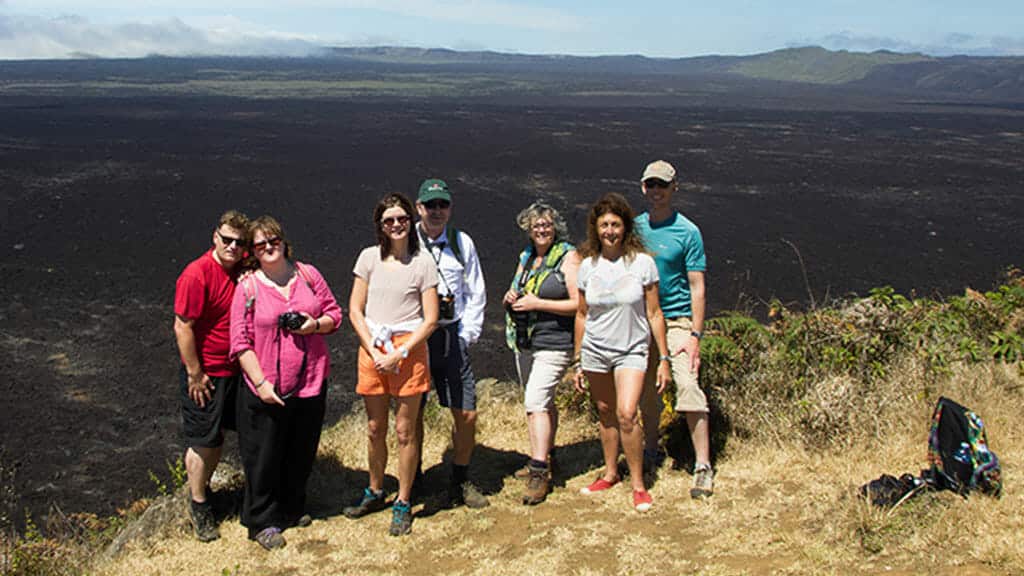
For Galapagos cruise passengers, check your yacht itinerary before booking. Some Galapagos cruise itineraries include Sierra Negra Volcano as a point of visit in the national park. Here are a few options to consider:
Standard Class - Aida Maria (itineraries B & F)
Comfortable Class - Yolita (itinerary 8A)
Luxury Class - Beluga (itinerary 8A) / Treasure of Galapagos (7 days)
Super Deluxe Class – Natural Paradise (itinerary 8B)
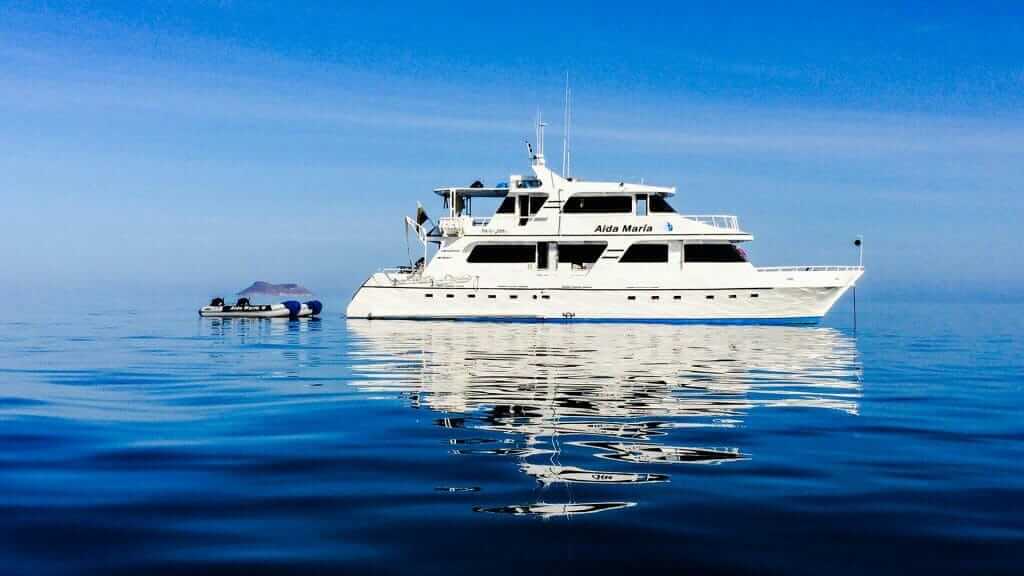
Can visitors hike Sierra Negra alone, without a Galapagos tour?
Unfortunately, due to the potential risks involved with volcano trekking, the Galapagos National Park authority permits only guided visits to Sierra Negra Volcano at this time.
What if the Sierra Negra volcano is erupting, are visitors allowed to watch?
During past Sierra Negra eruptions, tourists have sometimes been able to enjoy watching the amazing spectacle from a safe distance. Of course, this though depends on whether conditions are safe to do so. Check with your guide or tour company to see if this is possible.
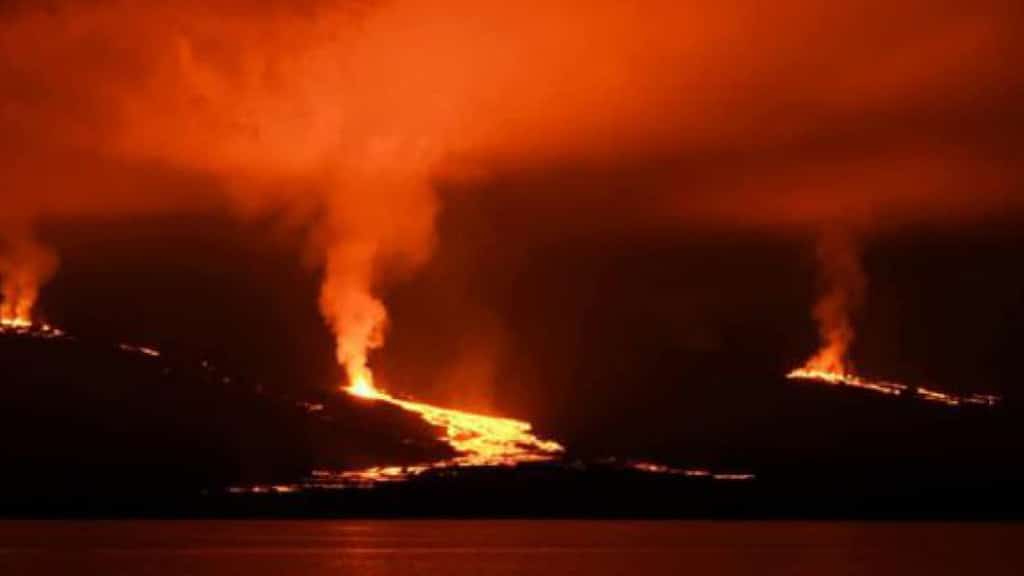
Things to do at Sierra Negra Volcano
1. Sierra Negra Hike
Hands down the most popular Sierra Negra activity is hiking the trail up to the crater rim. The views from the peak are spectacular, both looking into the crater and enjoying panoramic vistas of Isabela island and beyond.
The trek to the lookout is rated easy-moderate. A 1.5km dirt trail rises steadily from 900m, up to 1,100m above sea level. The only real challenges to confront are the mud (in rainy season), and your own fitness and energy levels.
For an extra dose of adventure, trek beyond the Sierra Negra Volcano lookout (mirador), to visit the parasitic vent volcano - Volcan Chico. The incredible lunar landscapes are otherworldly, while lava ovens, and white, waspish fumaroles let off steam. On a clear day, hikers can also enjoy panoramic views of Darwin Volcano, and Santiago, Fernandina, and Pinzón islands.
The 1.5km trail beyond the lookout to Volcan Chico is a little more challenging due to the uneven, rock-strewn surfaces, and hot temperatures without shade. Be sure to carry lots of water and use sun protection here.
2. Sierra Negra Horse Riding
If the trek sounds like hard work, why not rent a horse up to the Volcan Sierra Negra lookout? At the time of writing the extra cost (on top of the regular tour price) is approx $30 per person. Jump in the saddle, and enjoy the lush highlands scenery as your horse plods along the trail.
3. Picnic under the old Jaboncillo Tree
One of the best rewards after the hot Sierra Negra hike is to enjoy a picnic under the shade of an old Jaconcillo (soapberry) tree. Close to the Sierra Negra lookout, wooden benches provide a welcome rest under the giant branches. Don’t be surprised if native Galapagos birds, like Darwin finches, hop right up to pick at your sandwich crumbs.
The jaboncillo tree species is of interest in its own right. The tree’s nuts can be used as soap with sliced open and mixed with water to form a lather. Native Americans and other indigenous cultures throughout the world have used this very fruit for washing over the centuries.
4. Bird watching
In terms of wildlife, the Sierra Negra trail is of most interest to bird watchers. Mockingbirds and different species of Darwin finch are common sightings, hopping around in bushes and scrub. Eye-catching red vermillion flycatchers and yellow warblers will also sometimes make a welcome appearance.
Also, keep your eyes on the sky, occasionally one can spot Galapagos hawks majestically soaring the thermals high above.

GET FREE ADVICE
From a Galapagos destination expert todayPracticalities for visiting Sierra Negra Volcano
- A reasonable level of fitness is required for the Sierra Negra hike & Volcan Chico trail. Paths can be muddy and rocky, with uneven surfaces, so go prepared. Hiking poles can be a good idea for extra stability.
- Expect a mix of different weather on the trek. Early mornings can be quite chilly on route to the Sierra Negra trailhead. But temperatures soon become hot while hiking under a strong sun. This is especially true during the warm & wet season from December through to May. As the name suggests, rain showers (sometimes heavy) can also sometimes be expected.
- Recommended clothing includes comfortable walking shoes or trekking sandals (open-toe sandals are not suitable), shorts or light trekking trousers, a t-shirt or light long-sleeved shirt, light rain jacket.
- What else to bring along? Sun protection (sunglasses, hat, sunblock), water bottle (at least 1-2 liters), energy snacks, insect repellent, camera/cellphone.
Fun Sierra Negra Volcano Facts
Why is the volcano called Sierra Negra?
Sierra Negra translates to English as Black Mountain, named after the dark and black colorings of the old lava flows inside the crater.
How big is Sierra Negra Volcano?
While Sierra Negra’s height of 1,124metres might not be much to shout about, it more than makes up for it in mass!
Sierra Negra has the largest caldera of all of the Galapagos volcanoes, and is one of the largest volcanic craters on the planet. Her circumference measures a huge 30km (19miles), a fact that can be fully appreciated from the Sierra Negra Volcano viewpoint. It’s impossible not to be impressed by the sheer magnitude of the caldera.
Perhaps surprisingly though, Sierra Negra is also the shallowest of the Isabela island volcanoes, measuring in at just 100m deep in places.
When was the last Sierra Negra eruption?
It’s fair to say that Sierra Negra Volcano rarely sleeps. Her most recent eruption was in the summer of 2018, and before that in 2005. In fact since the 1950’s there has been on average one eruption every decade. This is good news for tourists though, as there are lots of young lava flows (both A’a and Pahoehoe) to see, and usually small smoking fumeroles too.
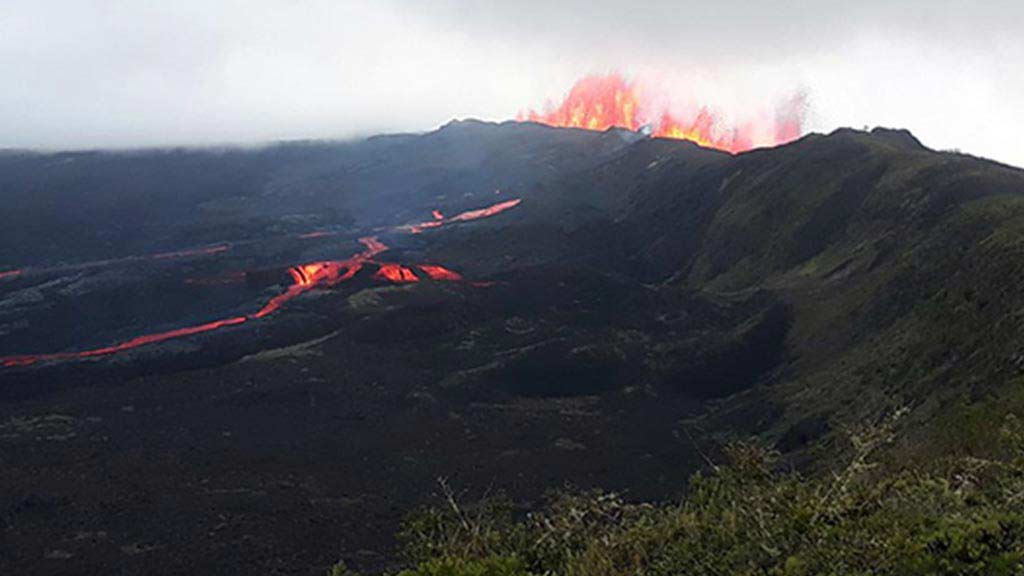
What type of volcano is Sierra Negra?
Sierra Negra is a large shield volcano. It was formed through many successive eruptions of very fluid, low viscocity lava. These thin flows spread quickly, far and wide, before solidifying, hence the long and broad shape of the resulting volcano.
Shield volcanoes are so named because they look like a warrior’s shield lying flat on the ground.
For more information about the geology and volcanic origin of the archipelago, check out our Galapagos Volcanoes blog post.
How old is Volcan Sierra Negra?
Geologists estimate Sierra Negra Volcano to be approximately 535,000 years old. Calculations are based on the volume of the volcano (588 km3), together with historic eruption rates.
Book with The #1 Trusted
Galapagos Travel Agency
Contact us to organise a Galapagos vacation that includes an unforgettable visit to Sierra Negra Volcano. We’ll be happy to send you a free tour quote, with all of the very best Galapagos options for your dream trip.
In conclusion, Sierra Negra Volcano is the big daddy of Galapagos craters. It’s also the most accessible and easy to visit. For visitors to Isabela island, Sierra Negra is a great option for an active day tour hike, and an opportunity to learn about the volcanic origins of the Galapagos islands. We highly recommend the trek up to the Sierra Negra crater, for panoramic views and volcanic wonder!



